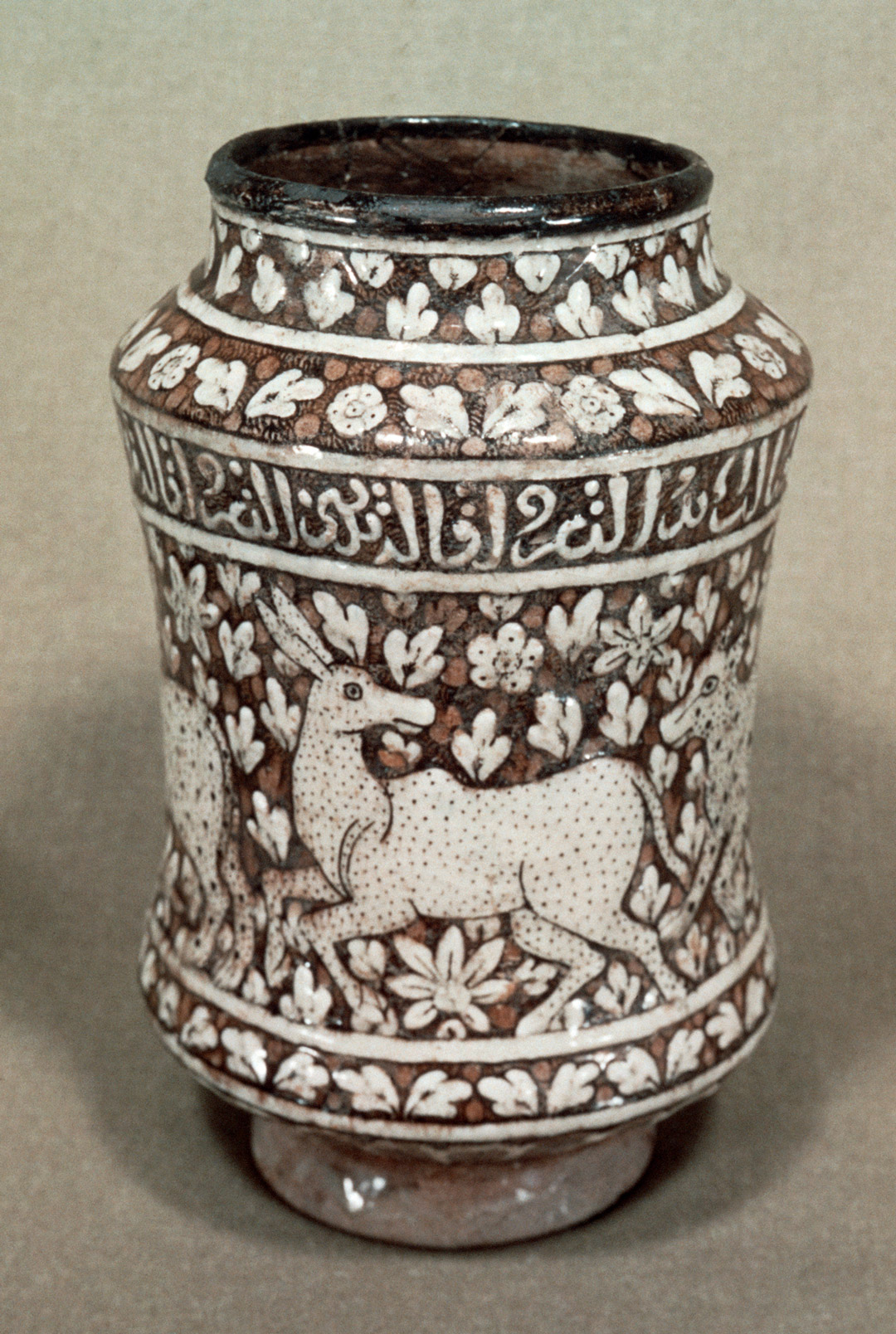Object of the Week: Drug jar

The winter months bring with them a wide range of traditions to which we look forward: holidays, gift-giving, new resolutions, and, of course, the good ol’ winter cold. We each develop our own methods of combatting (or coping with) stubborn winter germs, and this time of year often has me thinking about the ways in which we administer medicine and think about health more broadly. The history of medicine is of course a long and complicated narrative, but it is a history that would not exist without important contributions from the Muslim world.1
Dating back to the 14th century, this Islamic drug jar points to a rich moment of cross-cultural exchange and advances in science and medicine—fields all but forgotten during Europe’s Middle Ages, and that were fortunately recovered by Islamic scholars. During the medieval period, Muslim physicians saw significant advances in public health, diagnosing such major diseases as smallpox and measles, and the creation of urban hospitals and sanitation systems.
Vessels like this drug jar would have held medicinal herbs, roots, syrups, pills, or aromatic waters, and the top would have been covered with parchment and tied with string. The concave jar mimics the curved shape of bamboo stems, a formal homage to the material traditionally used to store medicines in Indonesia, a country that first felt the presence of Islam as early as the 9th century.
The choice to retain the shape of Indonesia’s bamboo containers is an interesting one that would eventually make its way into the ceramic traditions of Moorish Spain and Italy—clear evidence that more than just medical knowledge was shared during this period of global trade and expansion. Certainly, this earthenware jar is a far cry from the Emergen-C packets and plastic-encased medicine we buy today. Its very form acts as a reminder of the Muslim world’s role in both modern science and ceramics, as well as how differently we package and distribute medicine today.
– Elisabeth Smith, Collections Coordinator